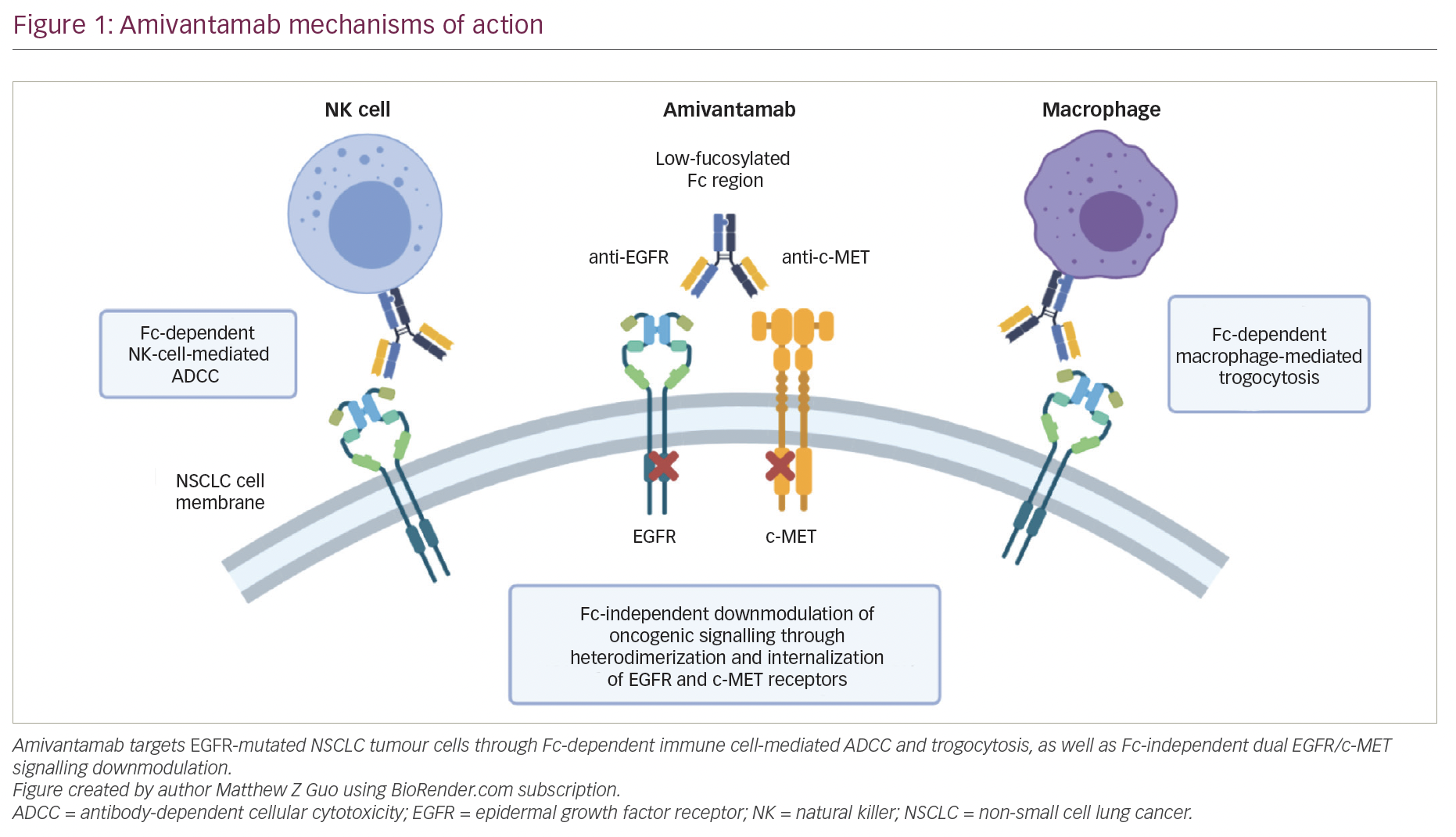Despite an unparalleled campaign over the last 10 years to increase public awareness of risk factors associated with lung cancer, carcinoma of the lung remains the leading cause of cancer-related death in the US and worldwide.1,2 Epidemiological data continue to show that in the US lung cancer accounts for 26 and 31% of cancer deaths in women and men, respectively.1 In 2007, over 213,380 new cases of lung cancer were diagnosed, accompanied by an estimated 160,390 deaths.1 Although death rates from lung cancer among men decreased for the first time in 1997, death rates among women increased during the same period.
Small-cell lung cancer (SCLC) accounts for approximately 20% of lung cancers and is one of the most aggressive and lethal cancer types.3 Five-year survival rates of patients with SCLC with limited disease range from 5 to 10%, and median survival among patients with SCLC with extensive disease is approximately 10 months.4–7 Although patients typically respond to firstline treatment (e.g. cisplatin plus etoposide) with systemic chemotherapy, they inevitably relapse. Although there are many important determinants of subsequent response in relapsed patients, the prognosis is generally unfavorable, with an unsatisfactory proportion of patients surviving for more than one year. To compound matters, many patients in this population are elderly and have multiple comorbidities that may render them unable to tolerate intensive chemotherapy. As a consequence, many oncologists have been reluctant to re-treat these patients and have questioned whether the potential clinical benefits of therapy for recurrent SCLC are sufficient to justify the sometimes debilitating toxicity and psychological stress of repetitive treatments. This article provides a brief review of the antitumor activity, tolerability, and quality-of-life effects of the active platinum-based chemotherapeutics used in this setting, with a focus on picoplatin.
Active Platinum-based Chemotherapeutics for Recurrent Small-cell Lung Cancer
Cisplatin, the first platinum analog, was introduced over 20 years ago and is still widely used. Cisplatin was followed by carboplatin, and most recently by oxaliplatin (1,2 diaminocyclohexane). Treatment with platinum analogs is limited by their toxicity. While neurotoxicity and nephrotoxicity are the main dose-limiting toxicities (DLTs) observed following cisplatin treatment, myelosuppression is the most common limiting event following carboplatin treatment. Carboplatin is known to cause cumulative dose-related toxicity that results in slow bone marrow recovery. Sensory peripheral neuropathy occurs in 82% of patients treated with oxaliplatin, and this is severe in 19% of patients.8,9
The efficacy of platinum analogs is limited by several (intrinsic or acquired) mechanisms of resistance, including impaired cellular uptake, intracellular inactivation by thiols (e.g. reduced glutathione [GSH]), and enhanced DNA repair and/or increased tolerance to platinum–DNA adducts.10,11
New Developments
Considerable effort has been applied to finding platinum analogs that overcome the resistance mechanisms associated with cisplatin and carboplatin, although this has so far met with limited success; for example, the 1,2-diaminocyclohexane (DACH) analog oxaliplatin appears to overcome resistance only at the level of DNA repair in pre-clinical models.12 Satraplatin (bis-acetato-ammine-dichloro-cyclohexylamine platinum (intravenous [IV]) is the most advanced of the new-generation platinum-based chemotherapeutics in terms of clinical evaluation. It was developed to be an orally active agent with a carboplatin-like profile. Although early data for satraplatin were promising in hormone-refractory prostate cancer,13 the results of a phase III trial involving 950 patients who had failed previous chemotherapy found that satraplatin in combination with prednisone did not increase overall survival in patients compared with placebo plus prednisone (61.3 versus 61.4 weeks).14 However, final progression-free survival data demonstrated that satraplatin significantly reduced the risk of disease progression, irrespective of the type of previous chemotherapy (p=0.023).15 Picoplatin (cis amminedichloro(2 methylpyridine) platinum(II)) is a cytotoxic platinum analog that, like other platinum analogs, forms covalent cross-links in DNA that interfere with DNA replication and transcription and lead to cell death.16 Additionally, picoplatin is available in both an IV and an oral formulation. Picoplatin was designed to avoid one of the major limitations of earlier platinum analogs, namely the development of drug resistance. Picoplatin was specifically designed with increased steric bulk around the platinum center, which hinders the inactivation of picoplatin by cytoplasmic thiol-containing compounds such as reduced GSH and metallothionein. As mentioned previously, the clinical efficacy of cisplatin and carboplatin is limited by three (intrinsic or acquired) resistance mechanisms: impaired cellular uptake, intracellular inactivation by thiols such as reduced GSH, and enhanced DNA repair or tolerance to platinum–DNA adducts.10
Pre-clinical studies indicate that picoplatin can, to a substantial degree, overcome these three mechanisms of resistance. This has been demonstrated in vitro and using human ovarian xenograft tumor models that exhibit resistance to cisplatin through the three mechanisms. The resistant lines were 4.5-, 6.5-, and 15.7-fold less sensitive to cisplatin, respectively, but only 1.3-, 2.4-, and 2.0-fold less sensitive to picoplatin, respectively.17–19 Importantly, picoplatin shows good activity in a range of human tumor cell lines and human tumor xenografts,20–23 and appears to avoid (in both animal studies and in phase I trials)24–29 the unacceptable nephrotoxicity30,31 and neurotoxicity32,33 associated with earlier platinum analogs. If this activity translates into the clinic, picoplatin could be used in the treatment of resistant tumors that have failed prior platinum therapy and in the treatment of tumors not previously exposed to a platinum analog.
Efficacy of Picoplatin
In phase I single-agent and combination studies, indications of activity were seen in patients with ovarian cancer, non-small-cell lung cancer (NSCLC), SCLC, colorectal cancer, head and neck cancer, renal cell cancer, thymic cancer, pancreatic cancer, stomach cancer, leiomyosarcoma, liver cancer, mesothelioma, and prostate cancers.28,29,34–37 In phase II studies, indications of efficacy were seen in patients with ovarian, NSCLC, SCLC, mesothelioma, prostate cancer, and breast cancer.38–43 Responses in platinum-resistant patients with ovarian cancer, NSCLC, SCLC, and mesothelioma were noted in phase II studies.38–41 Complete responses were noted in three patients with platinum-resistant ovarian cancer (phase II) and five patients with platinumsensitive ovarian cancer (phase III).38
Trial 0473IL/0004
The antitumor activity of picoplatin monotherapy as second-line therapy was assessed in advanced SCLC in the phase II trial 0473IL/0004. Patients were evaluated as either platinum-resistant (cohort 1: relapsed or progressed <8 weeks following prior platinum-based therapy) or platinum-sensitive (cohort 2: relapsed or progressed >8 weeks following prior platinum-based therapy).39 A total of 37 patients were evaluable in this open-label, noncomparative, multicentre study. Response rates in the per-protocol population, broken down by whether or not patients had progressed within or at eight weeks after completion of first-line platinum-based chemotherapy (resistant or sensitive patients), are shown in Table 1. In resistant patients, median time to death was 191 days and no patient survived after one year, while median time to progression was 42 days. In sensitive patients, median time to death was 250 days with 16.4% of the patients surviving after one year, while median time to progression was 92 days and all patients had progressed at one year following picoplatin therapy.
Trial 0402
Trial 0402 was a second, larger, phase II trial in patients with SCLC. It was designed to confirm the activity of picoplatin as second-line monotherapy for platinum-resistant SCLC. Initially, this was a trial of subjects who were either resistant or refractory to first-line platinum-based therapy randomized to picoplatin or topotecan. This was amended to a single-arm trial of picoplatin, and also to include subjects sensitive to first-line therapy but having relapsed within six months. The dose of picoplatin was 150mg/m2 every 21 days. A total of 84 patients were enrolled. Seventy-seven subjects received up to nine cycles of picoplatin (median two cycles; mean 2.9 cycles). Of the 77 evaluable patients, 45 were characterized as having refractory disease, 26 as having resistant disease, and six as being sensitive. Preliminary data showed a response rate of 4% by Response Evaluation Criteria in Solid Tumors (RECIST) and four patients (5%) had unconfirmed partial response (PR); 30 (39%) had stable disease (SD) and 36 (47%) had progressive disease (PD). The disease control rate was therefore 48.1%. Median progression-free survival was 9.3 weeks, and median overall survival was 26.7 weeks.41
Picoplatin Safety Data
Hematological toxicity is summarized in Table 2. The highest incidence of hematological toxicity was seen in the 150mg/m2 dose. This was more pronounced in Trial 0473IL/0002, a phase II trial in ovarian cancer patients who had failed initial platinum-based therapy, in which 30 of 45 patients (66.7%) had either a neutrophil count <0.5x109/l or a platelet count <25x109/l.38 In comparison, 25 of 107 patients (23.4%) in the combined data from three other phase II trials had either a neutrophil count <0.5x109/l or a platelet count of <25x109/l at this dose.39,40 Grade 3 and 4 thrombocytopenia (platelet count) were the most common hematological toxicities: at doses of 150mg/m2, this event was experienced by 36 of 45 patients (80.0%) in Trial 0473IL/0002 compared with 51 of 107 patients (47.7%) in the other trials. At doses of 120mg/m2, thrombocytopenia was experienced by 13 of 34 patients (38.2%) in Trial 0473IL/0002 and seven of 30 patients (23.3%) in the other trials. When comparing the 150mg/m2 doses, there was a higher incidence of neutropenia (<0.5x109/l) in Trial 0473IL/0002 compared with the other trials (19 patients [42.2%] and six patients [5.6%], respectively). Similarly, at the 120mg/m2 dose, there was also a higher incidence of neutropenia (<0.5x109/l) in Trial 0473IL/0002 (three patients [8.8%] and no patients [0.0%], respectively). The incidence of grade 4 anemia was low (<8%), and similar in Trial 0473IL/0002 and the combined data from other phase II trials.
When considering the first cycle of treatment only, the greater incidence of thrombocytopenia (platelet count <25x109/l) and neutropenia (neutrophil count <0.5x109/l) in Trial 0473IL/0002 at the 150mg/m2 dose (44.4%) suggests the dose may be too high in this patient population. When considering the two sub-populations within Trial 0473IL/0002 (platinumresistant and platinum-sensitive patients), there was no obvious difference in incidence of hematological toxicity (data not shown).
Renal Impairment and Safety
The effect of renal impairment on safety was explored retrospectively in data collected from 334 subjects in phase II monotherapy trials of SCLC, NSCLC, mesothelioma, and ovarian cancer. (Data from subjects without baseline creatinine clearance or post-baseline assessment of platelet count and/or absolute neutrophil count [ANC] were excluded from this analysis.38–41 In this population of subjects, most of whom had progressed after receiving firstline platinum-based chemotherapy, the majority had a baseline creatinine clearance below normal. Overall, few patients (<10%) withdrew from any of these trials for reasons of drug-related adverse events. Toxicity related to myelosuppression was the most frequent cause of serious adverse events related to study drug appearing in the lung cancer groups;39 there were no clinically significant nephro-, oto-, or neurotoxicities in any study. Disease progression accounted for the other serious adverse events.38,40,41 The most common hematological toxicity with single-agent picoplatin treatment is thrombocytopenia. Toxicity related to myelosuppression has been the most frequent cause of serious adverse events related to picoplatin. Disease progression has accounted for the other serious adverse events.
Picoplatin Phase II Program
One phase III trial has been initiated. This is a randomized, controlled phase III trial of picoplatin and best supportive care (BSC) versus BSC alone in patients with SCLC that is refractory or progressive within six months of completing first-line platinum-containing chemotherapy. This phase III monotherapy study began enrolling patients in April 2007. Patients will receive picoplatin in the same dose and schedule as for the phase II SCLC trial: 150mg/m2 q21d IV.44 The primary efficacy end-point will be overall survival. The secondary efficacy end-points will be: the proportion of subjects who achieve an objective response (complete response + partial response); the proportion of subjects who achieve disease control (complete response + partial response + standard deviation); duration of response; and progression-free survival.







